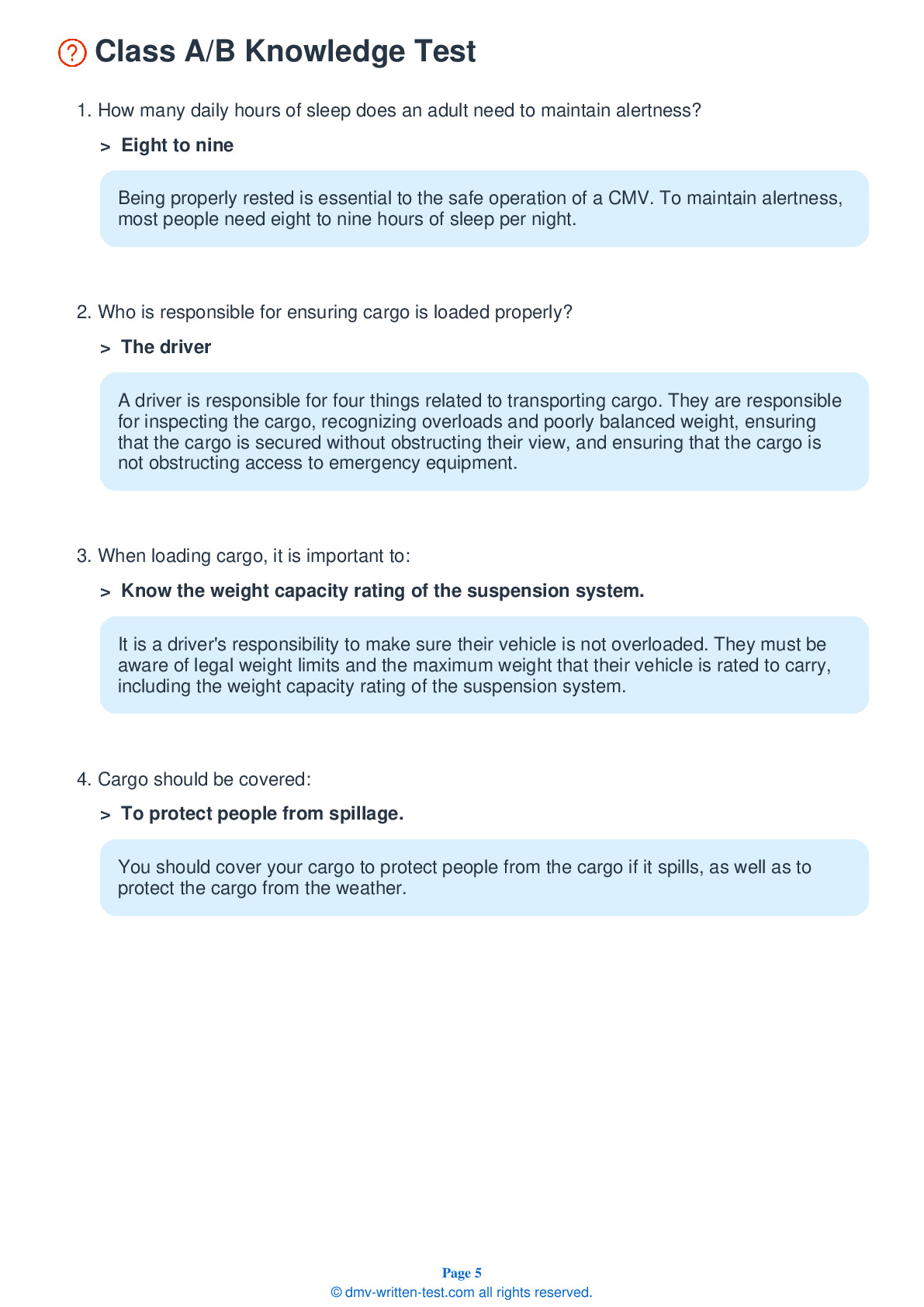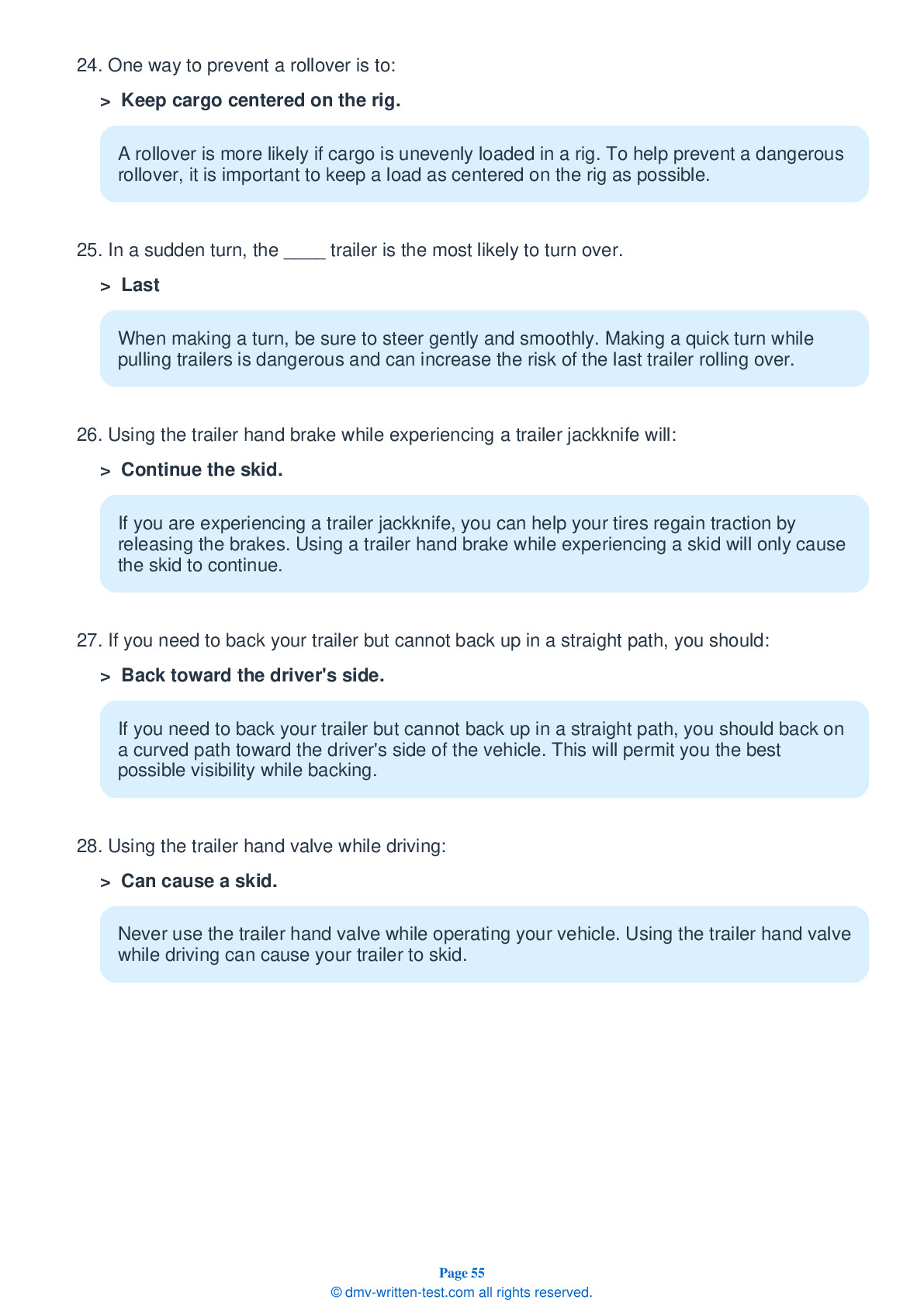Air Brakes
This endorsement is required for driving a vehicle with air brakes. To receive this endorsement, applicants must pass a written test. The test consists of 25 multiple choice questions. Each question has three answer choices. To pass, the applicant must answer at least 20 questions correctly. Test questions come from the Hawaii Commercial Driver License Manual. Questions come from the chapter covering: Air Brakes. The Air Brakes endorsement may be used with the Class A, B or C CDL.
Number of Question
Passing Score
1. What is brake lag?
Explanation
Because air takes time to flow through the air lines to the brakes, air brakes cannot begin working instantly. There is often a brake lag of at least one-half of a second between the moment the brake pedal is pressed and the moment the brakes begin to work.
2. When an S-cam turns inside a brake drum, the S-cam:
Explanation
When a brake pedal is pressed and the S-cam is turned, the S-cam presses the brake shoes against the inside of the brake drum. This causes friction and will cause the vehicle to slow.
3. In a dual air brake system:
Explanation
There are two air brake systems in a dual air brake system. The systems share a set of brake controls, but each system has its own tanks, hoses, and lines.
4. The leakage rate for a triple combination vehicle with air brakes should be no more than ____ in one minute during a static leakage test.
Explanation
When performing a static leakage test on a triple combination vehicle with air brakes, the leakage rate should be no more than 5 psi in one minute. If the air leaks from the air brake system at a quicker rate, the vehicle should not be driven because something likely needs to be repaired.
5. Lights that indicate that anti-lock brakes are not working are:
Explanation
Vehicles equipped with Anti-Lock Braking Systems (ABS) have yellow malfunction lights to indicate issues in the braking system.
6. On flat surfaces, wheel chocks:
Explanation




